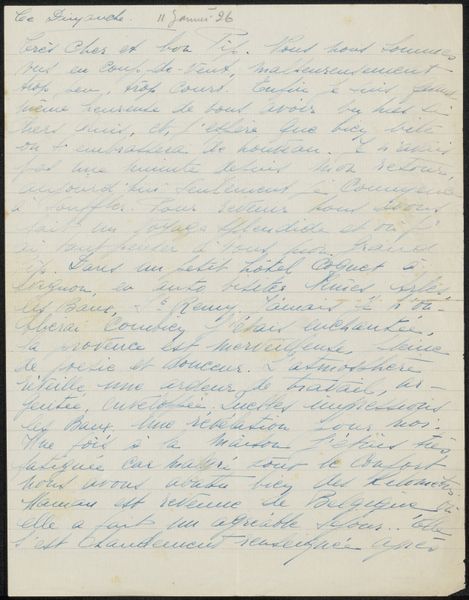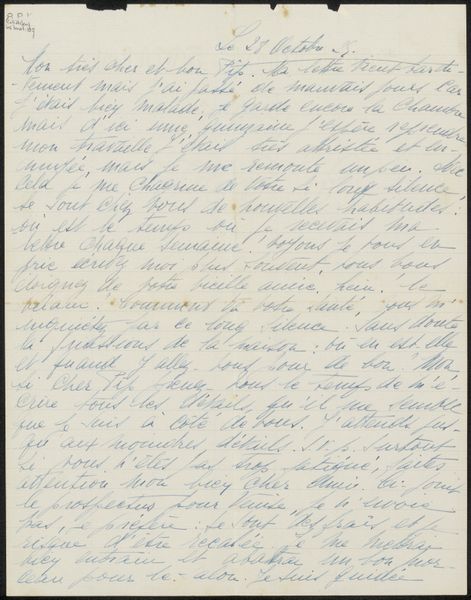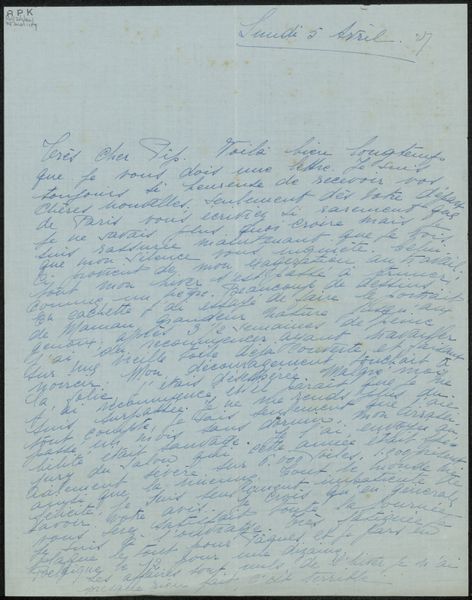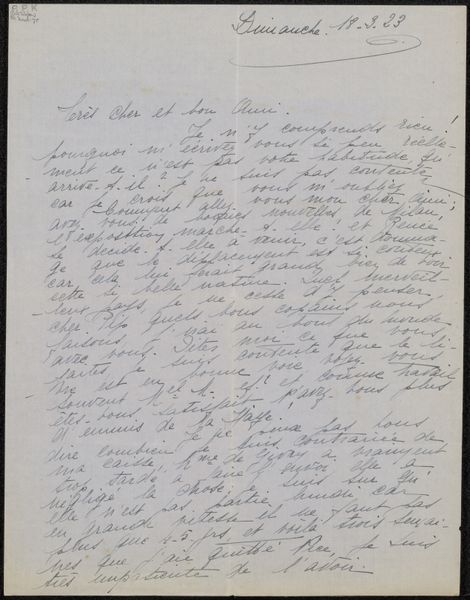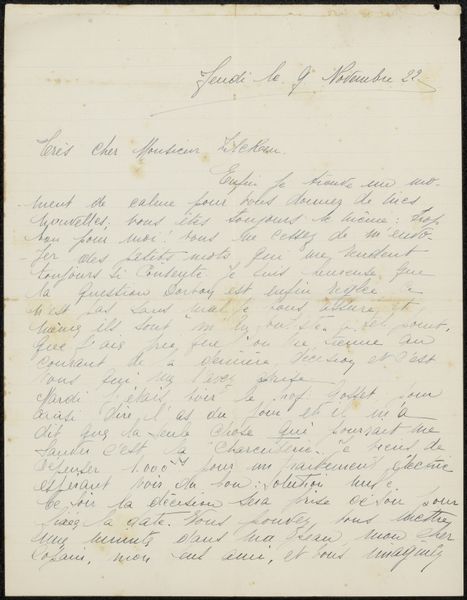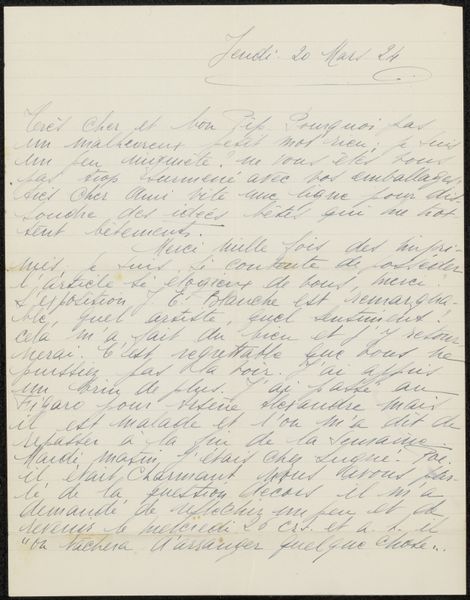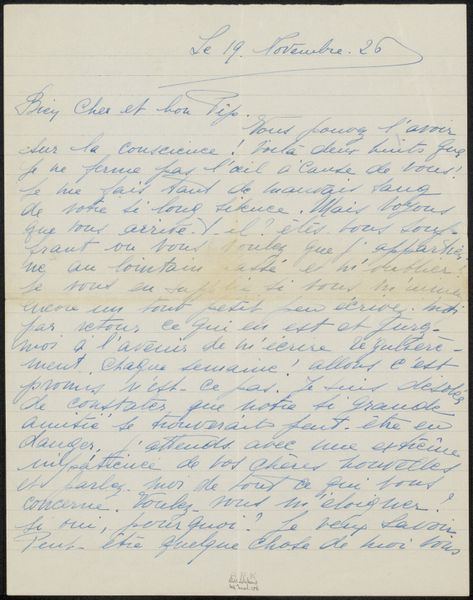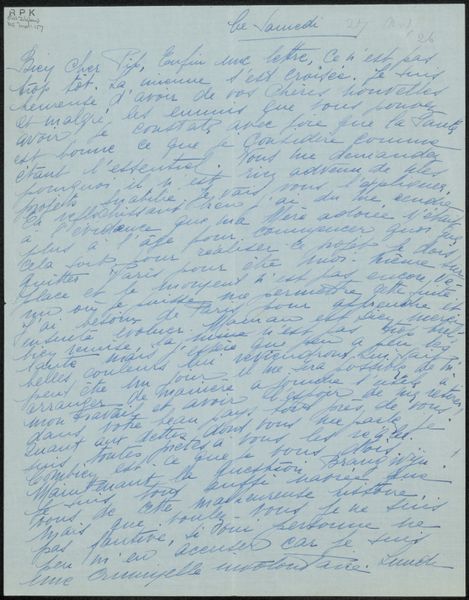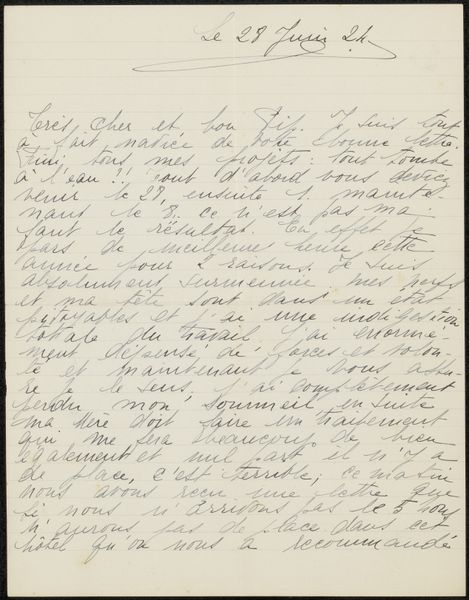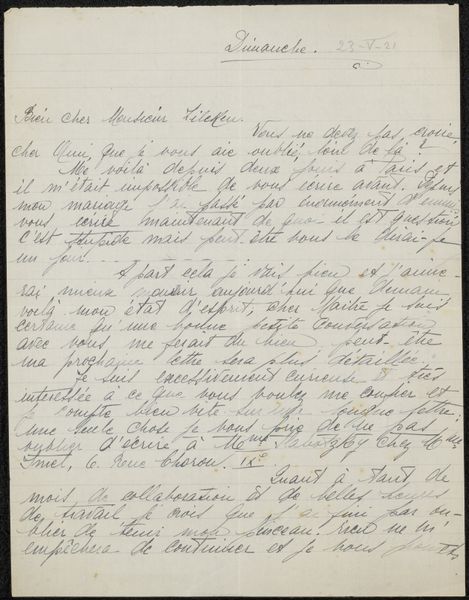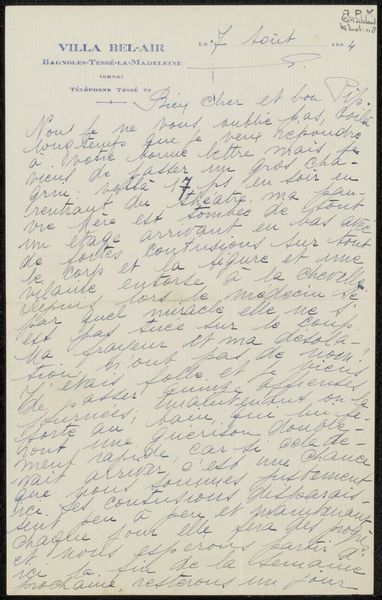
drawing, mixed-media, paper, ink, pen
#
drawing
#
aged paper
#
mixed-media
#
hand-lettering
#
ink paper printed
#
hand drawn type
#
paper
#
personal sketchbook
#
ink
#
ink drawing experimentation
#
ink colored
#
pen work
#
sketchbook drawing
#
pen
#
sketchbook art
Copyright: Rijks Museum: Open Domain
Editor: Here we have “Brief aan Philip Zilcken,” potentially from 1926, crafted with mixed media on paper—ink and pen. It looks like a handwritten letter, maybe a draft? There's a real intimacy in seeing the artist's handwriting. How do you interpret this work, considering its historical context? Curator: That's an excellent observation. What strikes me immediately is how this seemingly personal artifact provides a glimpse into the artistic and social networks of the time. Letters were crucial for communication, for building and sustaining communities, especially within the art world. Do you notice the date at the top? Editor: Yes, it seems to say May 2nd, 1926. Curator: Precisely. So, think about the socio-political landscape of the 1920s. It’s a period of recovery after the First World War, witnessing the rise of modernism and new artistic movements. Letters like this become vital documents in understanding the behind-the-scenes dialogues and the daily concerns artists were grappling with. How might this informal communication shape or reflect larger trends? Editor: That's interesting... It suggests that even casual correspondence could contribute to shaping the art world's discourse and its institutions. Were letters considered valuable or even archival material in their time? Curator: Often, no. It's through later collection and study that they gain such weight. They give insight into not only the artist's practice but the entire support structure – the galleries, patrons, and other artists - surrounding them. In essence, it shows the 'making of art' as a deeply social and collaborative process. Editor: So this letter isn't just a personal note; it’s a fragment of art history. It shows how artistic reputation is built over time, across formal and informal channels. Curator: Exactly. Seeing the art world not just through finished works in museums, but through the mundane communications is transformative.
Comments
No comments
Be the first to comment and join the conversation on the ultimate creative platform.
